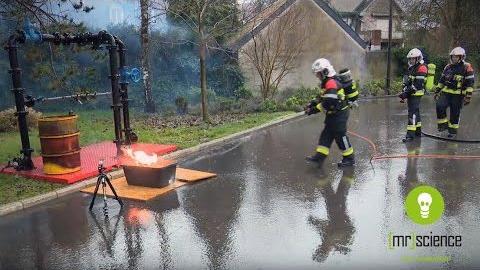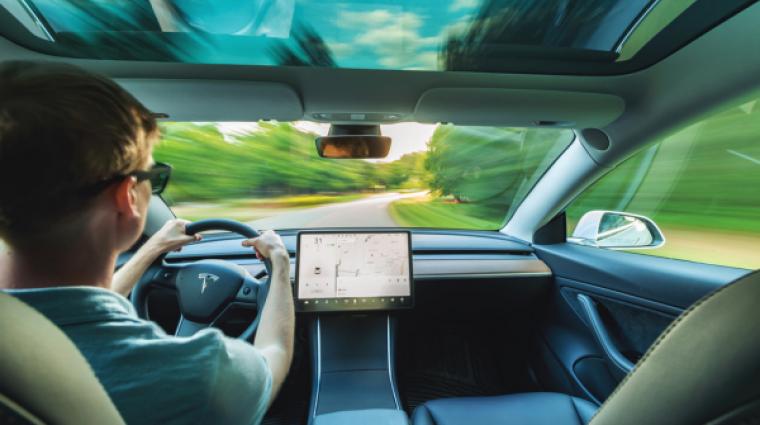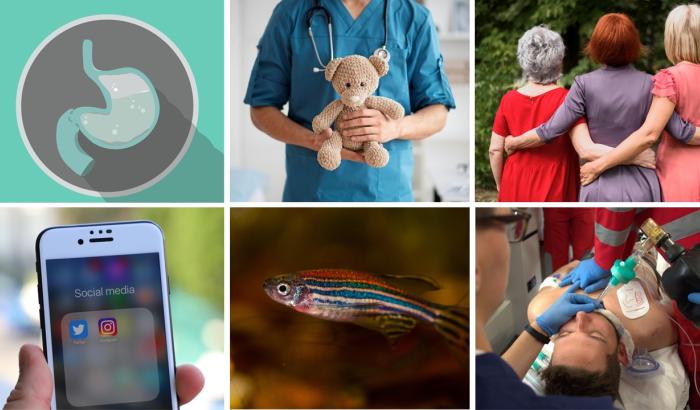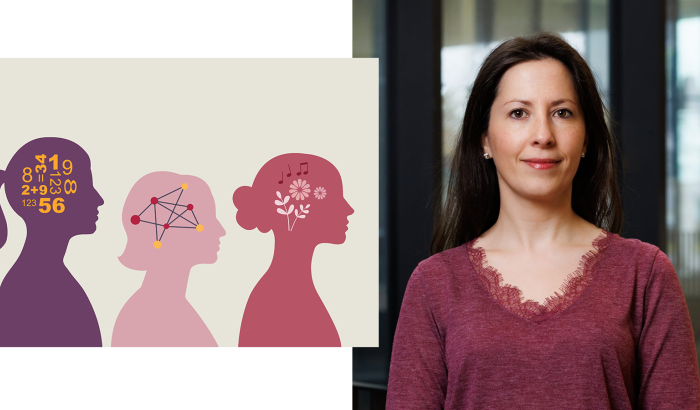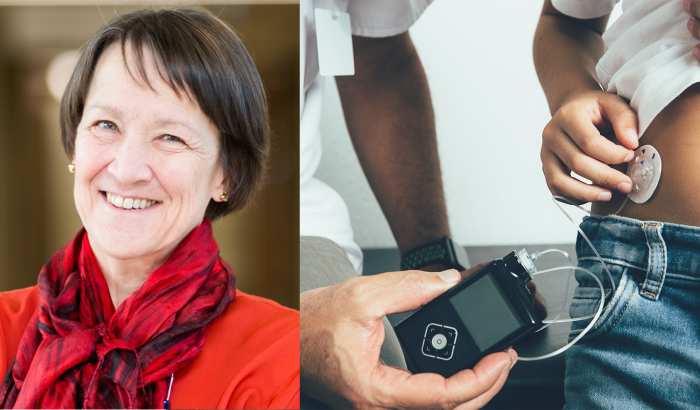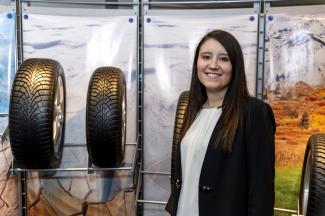
Beatriz Basterra Beroiz in front of her study subjects: Rubber tires
The PhD work of Beatriz Basterra Beroiz is different from the work of many of her colleagues: She did not only work at a university, but closely cooperated with an industrial partner. Science.lu asks, how this worked out.
Dr. Basterra Beroiz, during your PhD you studied rubber compounds. This material has scientifically been first described in the mid-18th century. Isn’t yet everything understood?
You would think this is the case, but it is not so. Every type of compound is different, depending on where rubber is used – be it in boots, swimming goggles or tires. As scientists, we investigate the different material properties, which are needed for product performance optimization and development. As an example, for tires we can e.g. measure viscoelastic properties to know about rolling resistance or we can measure mechanical properties to learn about elasticity – this is still a very active field of research with a lot to discover.
What was your specific work?
My work addressed the determination of two key properties: First, the chemical links that anchor the polymer chains and make a rubber band come back to its original position after stretching. Second, the coupling of rubbers with fillers, like for instance carbon black or silica - which contributes to the mechanical properties of rubber and critical tire performances. My research focused on the experimental techniques that we can use and the different physical models that we need to combine to get a quantitative understanding of these properties at the molecular level.
For your PhD, you worked in a private-public-cooperation between the Leibniz Institute for Polymer Research and the Technische Universität Dresden, the Institute of Polymer Science and Technology in Madrid and Goodyear. How did you establish this cooperation?
I first did an internship at the Goodyear Innovation Center in Colmar-Berg, Luxembourg. During my studies, I participated in academic research projects and studied for a year in Sweden. The internship gave me a first flavor of research in an industrial environment while continuing acquiring international experience and made my interest in rubber science grow. I realized the importance of understanding the link between the molecular structure of rubbers and the final product performance properties, such as rolling resistance, wet braking or treadwear in the case of tires.
How did the cooperation in practice turn out?
During internal discussions at Goodyear, we developed a scientific strategy to improve the existing characterization of the elastic properties of rubber at the molecular level. Then, we identified our academic project partners, concentrating the state-of-the-art expertise that was required in both theoretical and experimental domains to make the project successful. Once we had all the pieces in this collaboration puzzle, we prepared an application for the FNR for PhD grants under a Public-Private-Partnership (PPP).
Working in industrial research surely is different from academia. How free have you been in e.g. publishing and sharing your results?
I had the opportunity to share the outcome of my research with the scientific community through publications and on international conferences. Working in an industry, the public communication of results requires prior approval, and in this context, Goodyear was always very supportive as it has a long history in running PhD and post-doctoral research projects.
After your PhD you stayed with Goodyear…
Yes. Throughout my PhD, I enjoyed as much the work in academy as in industry and I considered them equally good options to continue my career. What finally convinced me about staying in industry is that, if you have a good idea, there is always a possibility to make it happen and the chance to participate in the complete process from the lab to the product. I now work on both fundamental research and applications to contribute to the development of the products of tomorrow. This is a very interesting domain, as developments in the field of rubber, being in your shoe soles or on your tires, literally keep making the world move forward.
Author: Tim Haarmann
Photo: Beatriz Basterra Beroiz


